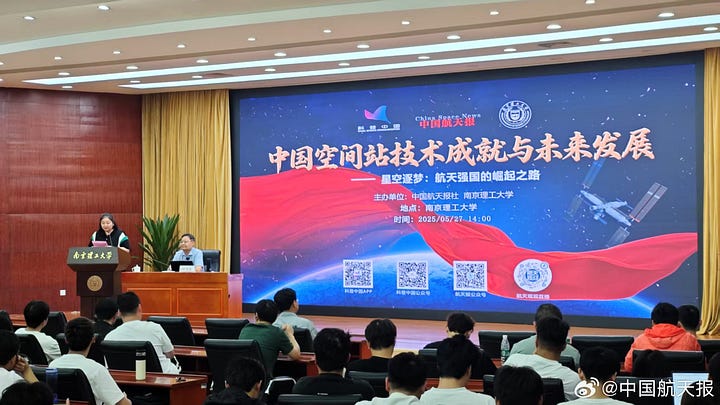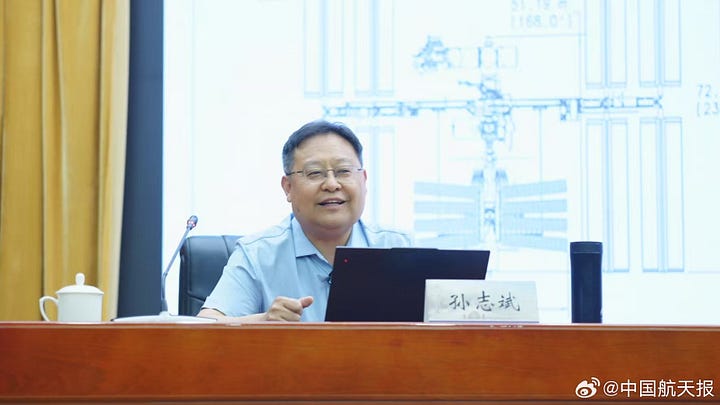Is China Really Arming Tiangong?
Academic speculation has been reported as fact and reprinted elsewhere, lacking context.
The South China Morning Post reported on May 29th, in an article titled “China plans to arm Tiangong space station with self-defence bots“, that China is considering deploying a rapid-response space defense system to intercept suspicious spacecraft targeting the Tiangong Space Station.
This report was based on a talk by Sun Zhibin (孙志斌), research fellow at the National Space Science Center (中国科学院国家空间科学中心), at Nanjing University of Science and Technology (南京理工大学). According to the Morning Post, Sun outlined scenarios in which China’s Tiangong space station might face potential interference from other spacecraft in low-Earth orbit. To respond to interference, the use of small, robotic spacecraft could be deployed to intercept and redirect suspicious objects approaching too closely to Tiangong. Two short quotes from Sun Zhibin used by the Morning Post to support their story were:
“Sometimes another spacecraft may deliberately come close – maybe just to take a look – but it can still interfere with our operations.”
“In such cases, we first try to assess their intent. Then we choose how to respond – whether by dodging, adjusting our orbit, or releasing a small robot to grab and redirect the object.”
This report is the latest in a series of exaggerated and sensationalized reports from the Morning Post. As Zichen Wang in Pekingnology highlights, the outlet has persued a genre of science stories based entirely on an article in academic journals or a single individuals words, with no links back to where they found it.
But due to the Morning Post’s unparalleled English-language reporting on China, various other media entities have picked up on their story, either for reprinting or twisting what was presented. This has led to headlines like “China develops space defence system to repel suspicious spacecraft”, “China to build robot thruster to shield space station from Elon Musk’s satellite swarm“, and “China Plans to Arm Space Station”. The last of those three reports, from the for-profit WION, went on to say, based upon its interpretation of the Morning Post’s work, that China is violating the Outer Space Treaty, a wild accusation and misrepresentation.
So, what is the actual fact of Sun Zhibin’s talk at Nanjing University of Science and Technology?
The talk was a public science popularization event that lasted ninety minutes, with the entire talk published on Weibo by China Space News (中国航天报). Covered in the talk was China's space station development through its technological achievements, breakthroughs, and difficulties overcome, along with some possible future developments. Those future developments were briefly touched on, especially the supposed self-defence bots. Not covered were actual plans for the Tiangong Space Station, just academic speculation.


However, the brief mention and few quotes were all the South China Morning Post needed to run its story on the alleged arming of Tiangong, which then led to other publications picking up and running with the story.


